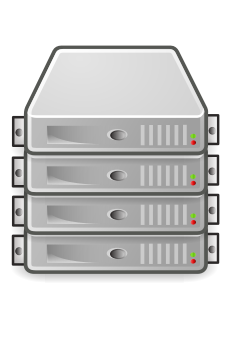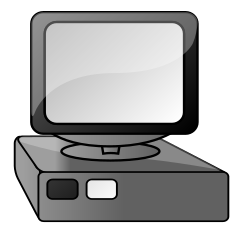Name:Anushka Taralkar Roll no:151 Sub: Computer Network
Basic components of network
Servers - Servers are computers that hold shared files, programs, and the network operating system. Servers provide access to network resources to all the users of the network. There are many different kinds of servers, and one server can provide several functions. For example, there are file servers, print servers, mail servers, communication servers, database servers, fax servers and web servers, to name a few. Sometimes it is also called host computer, servers are powerful computer that store data or application and connect to resources that are shared by the user of a network.
Clients - Clients are computers that access and use the network and shared network resources. Client computers are basically the customers(users) of the network, as they request and receive services from the servers. These days, it is typical for a client to be a personal computer that the users also use for their own non-network applications.
Router
A router is a device that connects a local area network to the internet. It performs this function by forwarding packets using an IP address, therefore it is an L3 device.
A router can perform a host of functions to facilitate inter- and intra-network communications. For example, a router utilizes dynamic host control protocol (DHCP) to assign IP addresses to each connected device. Then, that information can be used to send data in and out of the network. However, to communicate out to the internet, Network Address Translation (NAT) is required.
Network interface card
It implements the physical layer circuitry necessary for communicating with a data link layer standard, such as Ethernet or Wi-Fi. Each card represents a device and can prepare, transmit and control the flow of data on the network.
Steps required To set up network in lab.
•Choose the right network topology: There are different types of network topologies, such as star, ring, and mesh. Choose the topology that suits your lab's requirements and budget.
•Select the right network equipment: You will need switches, routers, and cables to connect the computers. Choose high-quality equipment that can handle the amount of traffic and the number of users in your lab.
•Plan the layout: Decide how to arrange the computers and the network equipment in the lab. Make sure there is enough space for the computers and the cables.
Install the network equipment: Install the switches and routers according to the network topology you have chosen. Connect the switches to the computers using the appropriate cables.
•Configure the network: Configure the switches and routers to enable communication between the computers. Set up IP addresses, subnet masks, and default gateways for each computer.
•Test the network: Test the network to ensure that all the computers can communicate with each other. Use network testing tools to identify and resolve any issues.
Set up security measures: Set up firewalls, antivirus software, and other security measures to protect the network and the computers from malware and unauthorized access.
•Maintain and upgrade the network: Regularly maintain the network equipment and upgrade it as needed to keep up with the latest technology and security standards.
Setting up a computer network lab of 600 computers is a complex task that requires expertise in networking and IT infrastructure.
•Consider hiring a professional IT company to help you with the installation and configuration of the network.





